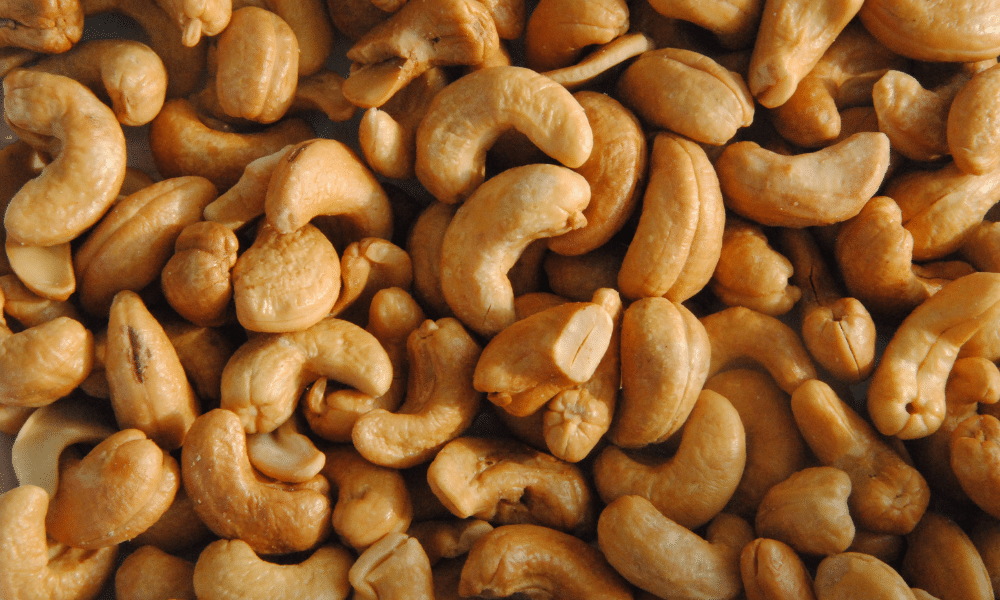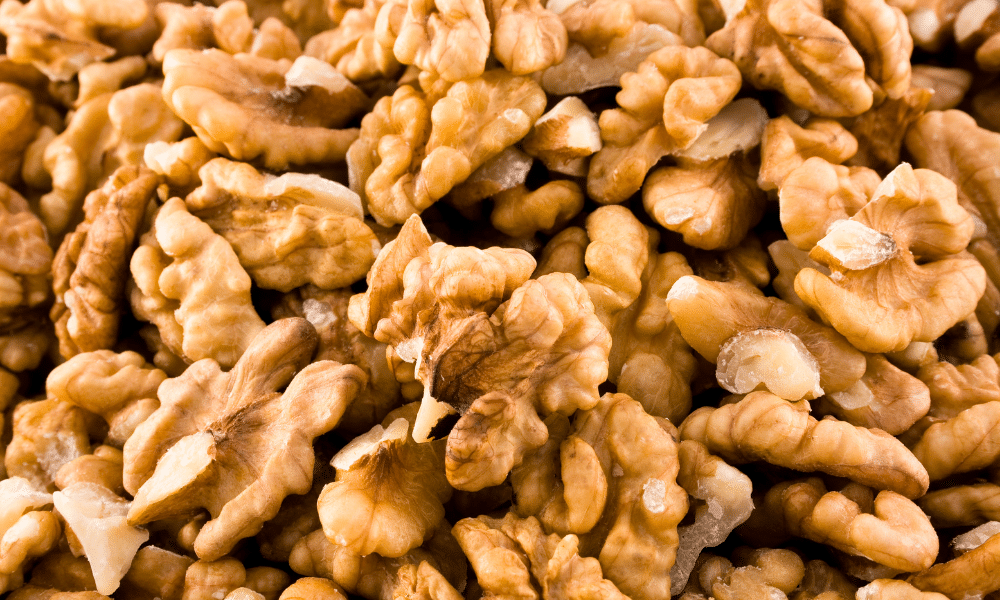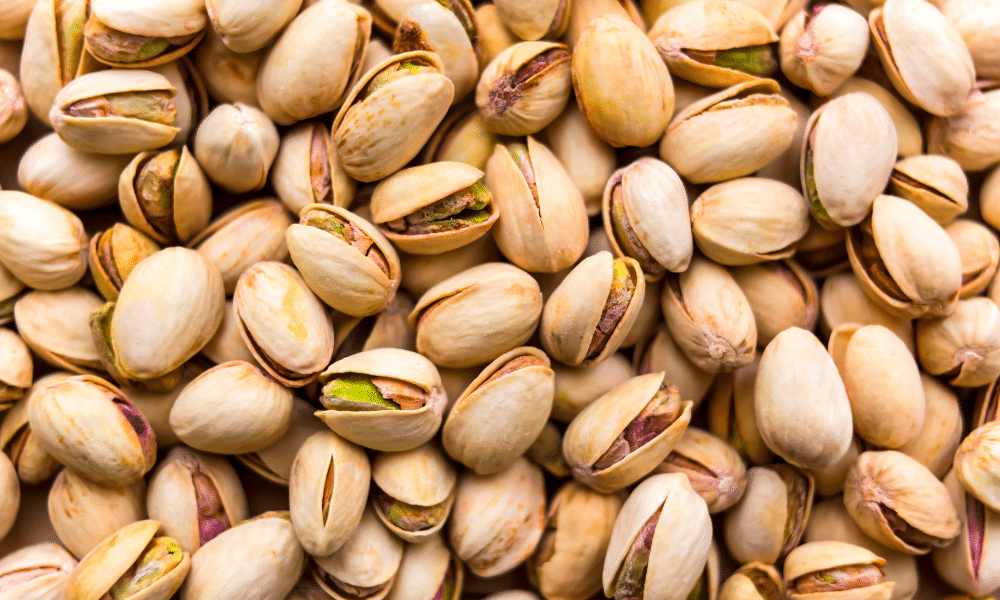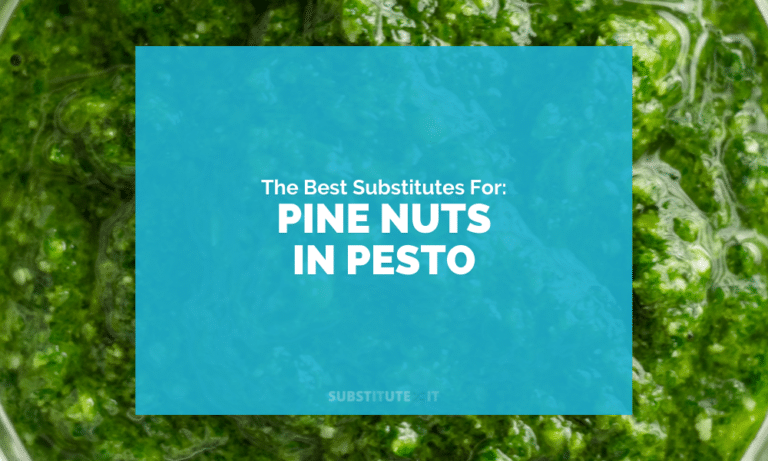The classic Italian pesto that we all love to add to our pasta can be an expensive condiment to make from scratch, mostly because of the use of pine nuts.
Pine nuts are one of the most expensive nuts in the world but can be easily substituted with another nut for half the price. So, what are the best substitutes for pine nuts in pesto?
Our 4 Substitutes for Pine Nuts in Pesto
When making pesto, there are a few characteristics that a pine nut substitute needs to possess.
Having a mild nut undertone that isn’t overpowering is essential when you plan to use pesto as part of a larger dish. The substitute also needs to be able to blend easily enough to create that creamy texture.
Here are our top substitutes that can help you achieve the perfect pesto without pine nuts:
1) Cashew Nuts
Cashew nuts most closely resemble pine nuts when used in pesto. Pine nuts have an instant, punchy flavour which cashews can also provide so long as they are toasted.
You can use an oven to do this but to closely replicate the pin nut flavour, use a pan instead: Warm your pan up over a medium heat and toast the cashews until they are a light brown colour.
It will be easy to tell when they have changed colour as cashews are typically quite pale. However, you can always set a timer for roughly 4 minutes instead.
Once toasted, cashews will resemble the colour and the slightly sweet flavour of a pine nut but will provide a creamier texture.
Substitute 1 tablespoon of chopped pine nuts for 1.5 tablespoons of chopped cashew nuts.
Avoid Over Blending Cashew Pesto
Cashews tend to be extra creamy once they are blended, more so than pine nuts. If you are not a fan of extra creamy pesto, then simply don’t blend your ingredients as thoroughly and skip blanching your basil as some recipes would suggest.

2) Walnuts
Out of all the nut substitutes on this list, walnuts are naturally the most bitter.
The bitterness of walnuts comes from the thin brown skin surrounding the nut itself which is safe to each but can cause your pesto’s flavours to become unbalanced.
It is very easy to peel away this skin once the walnuts have been toasted.
A walnut’s flavour is best enhanced when toasted in an oven at a medium heat for 2 – 5 minutes. The nuts will start to release a woody aroma once they are ready to be taken out. To peel away the skin, let the walnuts cool first and then get to peeling.
When using walnuts in place of pine nuts, half the amount that the recipe calls for.
Soak Walnuts Overnight
Unless your walnuts are given time to soak in water for more than 6 hours, your pesto may not achieve the slight creaminess that pine nuts provide.
You will also be able to easily peel away the bitter skin once the nuts have been left to soak for long enough.

3) Almonds
Almonds are already a versatile nut and can work as the perfect budget alternative to pine nuts in pesto recipes if you have the time to prepare them.
They are typically a less flavourful nut even after toasting but do provide an identical texture to pine nuts after being soaked and have had their skins removed.
To do this, simply set up a bowl of water and leave your almonds to soak for at least 6 hours to get that desired pine nut texture. Then peel off their skins and add them to your pesto blend.
If you prefer, you can leave them to soak longer to make an even creamier pesto.
Match the required amount of pine nuts when measuring out your almonds.
Buy Chopped Almonds to Save Time
If you are an avid baker then you probably already have almonds lurking in your cupboard. You can chop them up into ½ inch pieces yourself before soaking them
Or, you can buy pre-chopped almonds. These will soak up the water quicker than whole almonds and will already have their skins removed, saving you time and effort.
4) Pistachios
No other pine nut substitute will make your pesto more aesthetically pleasing than pistachios.
Pistachios have a significantly stronger nutty flavour than pine nuts and can be sweeter.
They are a common food choice in Italian recipes and there are plenty of pesto recipes out there that call for pistachios. So, find a recipe that works to balance out their unique flavour.
It is best to use 1.5 tablespoons for every 1 tablespoon of pine nuts a recipe requires.
Balance the Sweetness with Pasley
Even if you prefer the flavour of pistachios in pesto, you will still want to balance out the nut’s sweet flavour. Otherwise, your pesto will be too overpowering when used in a dish.
Chopping up just a few leaves of parsley will help achieve this balance and add to that signature green pesto colour as well.

Other Substitutes for Pine Nuts in Pesto
While the above-mentioned nuts are all great substitutes, you may have other reasons for wanting to rid your pesto of pine nuts.
So, here are a few nut-free alternatives you can use to achieve creamy pesto on a budget.
- Sunflower Seeds – Though they will dull the green colour of your pesto, sunflower seeds resemble a pine nut in every other way but aesthetic. They provide a satisfying crunch and a surprisignly mild nutty flavor.
- Edamame – These green soybeans are the perfect nut-free substitute. Once they have been roasted, they release a slightly sweet, mildly nutty flavor.
Summary
To conclude, there are many other nuts out there that work as substitutes for pine nuts in pesto. Some options just require a bit more preparation than others.
There are also a handful of nut-free alternatives that work just as well as pine nuts just without the nut part.
